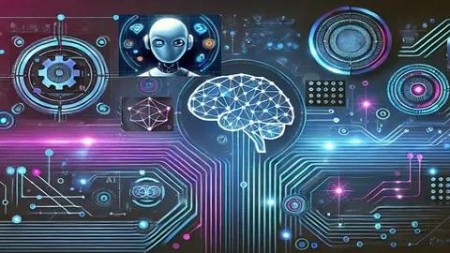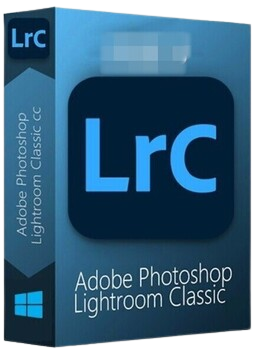Most Commented
Natural Language Processing With Cutting Edge Models




Description material

Natural Language Processing With Cutting Edge Models
Published 10/2024
MP4 | Video: h264, 1920x1080 | Audio: AAC, 44.1 KHz
Language: English | Size: 9.62 GB | Duration: 27h 6m
NLP : NLTK, Machine and Deep Learning for NLP, Word Embeddings, Markov Model, Transformers, Generative AI for text
What you'll learn
Text Preprocessing and Text Vectorization
Machine Learning Methods for Text Classification
Neural Networks for Text Classification
Sentiment Analysis and Spam Detection
Topic Modeling
Word Embeddings and Neural Word Embeddings
Word2Vec and GloVe
Generative AI for Text data
Markov Models for Text Generation
Recurrent Neural Networks and LSTM
Seq2Seq Networks for Text Generation
Machine Translation
Transformers
Requirements
Some Python Programming Knowledge
Some knowledge about machine learning is preferred
Description
Hi everyone,This is a massive 3-in-1 course covering the following:1. Text Preprocessing and Text Vectorization2. Machine Learning and Statistical Methods3. Deep Learning for NLP and Generative AI for text.This course covers all the aspects of performing different Natural Language processing using Machine Learning Models, Statistical Models and State of the art Deep Learning Models such as LSTM and Transformers.This course will set the foundation for learning the most recent and groundbreaking topics in AI related Natural processing tasks such as Large Language Models, Diffusion models etc.This course includes the practical oriented explanations for all Natural Language Processing tasks with implementation in PythonSections of the Course· Introduction of the Course· Introduction to Google Colab· Introduction to Natural Language Processing· Text Preprocessing· Text Vectorization· Text Classification with Machine Learning Models· Sentiment Analysis· Spam Detection· Dirichlet Distribution· Topic Modeling· Neural Networks· Neural Networks for Text Classification· Word Embeddings· Neural Word Embeddings· Generative AI for NLP· Markov Model for Text Generation· Recurrent Neural Networks ( RNN )· Sequence to sequence (Seq2Seq) Networks . Seq2Seq Networks for Text Generation. Seq2Seq Networks for Language Translation· Transformers· Bidirectional LSTM· Python RefresherWho this course is for:· Students enrolled in Natural Language processing course.· Beginners who want to learn Natural Language Processing from fundamentals to advanced level· Researchers in Artificial Intelligence and Natural Language Processing.· Students and Researchers who want to develop Python Programming skills while solving different NLP tasks.· Want to switch from Matlab and Other Programming Languages to Python.
Overview
Section 1: Introduction to course and course material
Lecture 1 Introduction of the course
Lecture 2 Course Material
Lecture 3 How to succeed in this course
Section 2: Introduction to Google Colab
Lecture 4 Introduction of the section
Lecture 5 Mounting the drive and reading Dataset
Lecture 6 Reading and displaying images
Lecture 7 Reading More Datasets
Lecture 8 Uploading Course Material to Google drive
Section 3: Introduction to Natural Language Processing ( NLP )
Lecture 9 Introduction to NLP
Lecture 10 NLP History
Lecture 11 Applications of NLP
Lecture 12 Vocabulary and Corpus
Section 4: Text Preprocessing
Lecture 13 Introduction of the section
Lecture 14 Tokenization and Challenges
Lecture 15 Types of Tokenization
Lecture 16 Project01 : Tokenization with Python
Lecture 17 Project02 : Tokenization with NLTK
Lecture 18 Stemming, Lemmatization and Stopwords
Lecture 19 Stemming and Lemmatization with NLTK
Section 5: Text Vectorization
Lecture 20 Introduction of the section
Lecture 21 Word to Index Mapping
Lecture 22 Word to Index Mapping with Python
Lecture 23 Bag of Words
Lecture 24 Count Vectorizer
Lecture 25 Count Vectorizer with Python
Lecture 26 Machine Learning with Count Vectorizer
Lecture 27 TF-IDF Vectorizer
Lecture 28 TF-IDF Vectorizer in Python
Section 6: Text Classification with Machine Learning Models
Lecture 29 Introduction of the section
Section 7: Sentiment Analysis
Lecture 30 Introduction of the section
Lecture 31 Basic Concept of Logistic Regression
Lecture 32 Limitations of Regression
Lecture 33 Transforming Linear Regression into Logistic Regression
Lecture 34 Model Evaluation
Lecture 35 Accuracy-Precision-Recall-F1 score
Lecture 36 Project01 : Sentiment Analysis by Logistic Regression
Lecture 37 Intuition behind K-Nearest Neighbor ( KNN )
Lecture 38 KNN Algorithm
Lecture 39 Numerical Example on KNN
Lecture 40 Project02 : Sentiment Analysis With KNN
Lecture 41 Pre-trained Sentiment Analysis Model
Section 8: Spam Detection
Lecture 42 Introduction of the section
Lecture 43 Fundamentals of Probability
Lecture 44 Conditional Probability and Bayes Theorem
Lecture 45 Numerical on Bayes Theorem
Lecture 46 Naive Bayes Classification
Lecture 47 Comparing Naive Bayes Classification with Logistic Regression
Lecture 48 Project01 : Spam detection with Naive Bayes Classifier
Lecture 49 Fundamentals of Support Vector Machine ( SVM )
Lecture 50 Mathematics of SVM
Lecture 51 Hard and Soft Margin Classifier
Lecture 52 Decision rule for SVM
Lecture 53 Kernel trick in SVM
Lecture 54 Spam detection with SVM
Section 9: Dirichlet Distribution ( Optional )
Lecture 55 Introduction of the section
Lecture 56 Data Distribution in Statistics
Lecture 57 Dirichlet Distribution
Lecture 58 Applications of Dirichlet Distribution
Section 10: Topic Modeling
Lecture 59 Introduction of the section
Lecture 60 Topic Modeling
Lecture 61 Latent Dirichlet Allocation ( LDA )
Lecture 62 Project01 : Topic Modeling with LDA
Lecture 63 Non Negative Matrix Factorization ( NMF )
Lecture 64 Topic Modeling with NMF
Section 11: Neural Networks
Lecture 65 Introduction of the section
Lecture 66 The Perceptron
Lecture 67 Features, Weight and Activation Functions
Lecture 68 Learning of Neural Network
Lecture 69 Need of Activation Functions
Lecture 70 Adding Activation Function to Neural Network
Lecture 71 Sigmoid as an Activation Function
Lecture 72 Hyperbolic Tangent Function
Lecture 73 ReLU and Leaky ReLU
Lecture 74 MSE Loss Function
Lecture 75 Cross Entropy Loss Function
Lecture 76 Softmax Function
Section 12: Neural Network for Text Classification
Lecture 77 Introduction of the section
Lecture 78 Code Preparation
Lecture 79 Project01 : Implementing Neural Network in TensorFlow Part-01
Lecture 80 Project01 : Implementing Neural Network in TensorFlow Part-02
Lecture 81 Project02 : Text Classification with Neural Network Part-01
Lecture 82 Project02 : Text Classification with Neural Network Part-02
Section 13: Word Embeddings ( Statistical Method )
Lecture 83 Introduction of the section
Lecture 84 One Hot Encoding
Lecture 85 One Hot Encoding in Python
Lecture 86 Co-occurrence Matrix - Word Embeddings Intuition
Section 14: Neural Word Embeddings ( Word2Vec )
Lecture 87 Introduction of the section
Lecture 88 Methods of Word Embeddings
Lecture 89 Implementing Methods of Word2Vec
Lecture 90 Continuous Bag of Words ( CBOW )
Lecture 91 Project01 : Implementing CBOW Part-01
Lecture 92 Project01 : Implementing CBOW Part-02
Lecture 93 Project01 : Implementing CBOW Part-03
Lecture 94 Project02 : Implementing CBOW using Large Corpus
Lecture 95 Pretrained Word2Vec
Lecture 96 Project03 : Find Analogies with Word2Vec
Lecture 97 Text Classification using Word2Vec
Section 15: Neural Word Embeddings ( GloVe )
Lecture 98 Introduction of the section
Lecture 99 Project01 : GloVe Implementation
Lecture 100 Project02: Pretrained GloVe
Lecture 101 Project03 : Text Classification using GloVe
Section 16: Generative AI for NLP
Lecture 102 Introduction of the section
Section 17: Markov Model for Text Generation
Lecture 103 Introduction of the section
Lecture 104 Markov Model and State Transition Matrix
Lecture 105 Project01 : Text Generation by State Transition Matrix
Lecture 106 First Order Markov Model for Text Generation
Lecture 107 Project02 : Text Generation by First Order Markov Model
Lecture 108 Second Order Markov Model
Lecture 109 Project03 : Text Generation by Second Order Markov Model
Lecture 110 Project04 : Text Generation by Second Order Markov Model using Large Corpus
Lecture 111 Project05 : Text Generation by Third Order Markov Model
Section 18: Recurrent Neural Networks ( RNN )
Lecture 112 Introduction of the section
Lecture 113 Need of RNN
Lecture 114 Sequential Data
Lecture 115 ANN to RNN
Lecture 116 Back Propagation Through Time
Lecture 117 Long Short Term Memory ( LSTM )
Lecture 118 LSTM Gates
Lecture 119 Concept of Batch size, Sequence length and Feature dimension
Lecture 120 Project01: LSTM Shapes
Lecture 121 Project02 : Time Series Prediction by LSTM
Lecture 122 MNIST Classification by LSTM
Lecture 123 Project03: MNIST Classification Part01
Lecture 124 Project03: MNIST Classification Part02
Lecture 125 Text Classification
Lecture 126 Project04 : Text Preprocessing
Lecture 127 Project05 : Text Classification by LSTM
Section 19: Sequence to sequence ( Seq2Seq ) Network
Lecture 128 Introduction of the section
Lecture 129 Implementing Seq2Seq Network and Teacher Forcing
Lecture 130 Project01 : Text Generation by Seq2Seq Network
Lecture 131 Project02 : Machine Translation ( Language Translation ) by Seq2Seq Network
Section 20: Transfer Learning with Transformer
Lecture 132 Introduction of the section
Lecture 133 Project01 : Sentiment Analysis
Lecture 134 Project02 : Text Generation
Lecture 135 Project03 : Masked Language Modeling
Lecture 136 Project04 : Text Summarization
Lecture 137 Project05 : Machine Translation
Lecture 138 Project06 : Question Answering
Section 21: Transformer Architecture
Lecture 139 Fundamental Building Blocks of Transformer
Lecture 140 Encoder and Decoder
Lecture 141 Positional Encoding
Lecture 142 Attention Mechanism
Section 22: Fine Tuning the Transformer
Lecture 143 Introduction of the section
Lecture 144 Project01 : Model and Tokenization
Lecture 145 Project02 : Fine Tuning Transformer for Sentiment Analysis
Lecture 146 Project03 : Fine Tuning Transformer on Custom Dataset
Section 23: More Sections
Lecture 147 Introduction of the section
Section 24: Bidirectional LSTM
Lecture 148 Introduction of the section
Lecture 149 Working of Bidirectional LSTM
Lecture 150 Project01 : Shapes of Bidirectional LSTM
Lecture 151 Project02 : Bidirectional LSTM for MNIST dataset
Lecture 152 Dual Bidirectional LSTM
Lecture 153 Project03 : Dual Bidirectional LSTM for MNIST dataset
Section 25: Time Series Transformer
Lecture 154 Introduction of the section
Lecture 155 Project01 : Shapes of Encoder
Lecture 156 Project02 : Time Series Classification
Lecture 157 Project03 : Time Series Transformer Shapes
Lecture 158 Project04 : Time Series Reconstruction by Time Series Transformer
Section 26: Python Refresher
Lecture 159 Introduction of the section
Lecture 160 Arithmetic with Python
Lecture 161 Comparison and Logical Operations
Lecture 162 Conditional Statements
Lecture 163 NumPy Arrays Part01
Lecture 164 NumPy Arrays Part02
Lecture 165 NumPy Arrays Part03
Lecture 166 Plotting and Visualization Part01
Lecture 167 Plotting and Visualization Part02
Lecture 168 Plotting and Visualization Part03
Lecture 169 Plotting and Visualization Part04
Lecture 170 Lists in Python
Lecture 171 For Loops Part01
Lecture 172 For Loops Part02
Lecture 173 While Loop
Lecture 174 Strings in Python
Lecture 175 Print Formatting with Strings
Lecture 176 Dictionaries Part01
Lecture 177 Dictionaries Part02
Lecture 178 Seaborn part01
Lecture 179 Seaborn part02
Lecture 180 Seaborn part03
Lecture 181 Pandas Part01
Lecture 182 Pandas Part02
Lecture 183 Pandas Part03
Lecture 184 Pandas Part04
Lecture 185 Functions in Python Part01
Lecture 186 Functions in Python Part02
Lecture 187 Classes in Python
Lecture 188 Tuples
Lecture 189 Lambda Function
Lecture 190 Map Function
Lecture 191 Reduce Function
Lecture 192 Filter function
Lecture 193 zip function
Lecture 194 join function
Section 27: Bonus Lecture
Lecture 195 Introduction of the section
Students enrolled in Natural Language processing course.,Beginners who want to learn Natural Language Processing from fundamentals to advanced level,Researchers in Artificial Intelligence and Natural Language Processing.,Students and Researchers who want to develop Python Programming skills while solving different NLP tasks.,Want to switch from Matlab and Other Programming Languages to Python

Fikper
https://fikper.com/z4DHctApHh/Natural.Language.Processing.With.Cutting.Edge.Models.part1.rar.html
https://fikper.com/bwQyzfbmYV/Natural.Language.Processing.With.Cutting.Edge.Models.part2.rar.html
https://fikper.com/5aayDKBjiI/Natural.Language.Processing.With.Cutting.Edge.Models.part3.rar.html
https://fikper.com/k3rV35DcAy/Natural.Language.Processing.With.Cutting.Edge.Models.part4.rar.html
https://fikper.com/biNPhqC5pZ/Natural.Language.Processing.With.Cutting.Edge.Models.part5.rar.html
FileAxa
https://fileaxa.com/2kb1gjxjbgkj/Natural.Language.Processing.With.Cutting.Edge.Models.part1.rar
https://fileaxa.com/jl4rpqmsun93/Natural.Language.Processing.With.Cutting.Edge.Models.part2.rar
https://fileaxa.com/z62mc4wf1qs9/Natural.Language.Processing.With.Cutting.Edge.Models.part3.rar
https://fileaxa.com/4helrhwj58gr/Natural.Language.Processing.With.Cutting.Edge.Models.part4.rar
https://fileaxa.com/7nm4fcoxzvsz/Natural.Language.Processing.With.Cutting.Edge.Models.part5.rar
RapidGator
https://rapidgator.net/file/a4d19e8bd852648cabb1920dcd6444ce/Natural.Language.Processing.With.Cutting.Edge.Models.part1.rar
https://rapidgator.net/file/0675f70ccf651f2751ce73126daa3a6d/Natural.Language.Processing.With.Cutting.Edge.Models.part2.rar
https://rapidgator.net/file/915c6ccfe0191bdd2a1fed6ddfa3f495/Natural.Language.Processing.With.Cutting.Edge.Models.part3.rar
https://rapidgator.net/file/f1c63013a4733b35a8ef30b6d9cb06e6/Natural.Language.Processing.With.Cutting.Edge.Models.part4.rar
https://rapidgator.net/file/4ffcded73634610631513a70c4462247/Natural.Language.Processing.With.Cutting.Edge.Models.part5.rar
TurboBit
https://turbobit.net/elavhwk1due3/Natural.Language.Processing.With.Cutting.Edge.Models.part1.rar.html
https://turbobit.net/y8bx6ub9oc0w/Natural.Language.Processing.With.Cutting.Edge.Models.part2.rar.html
https://turbobit.net/0ofnsqkas58a/Natural.Language.Processing.With.Cutting.Edge.Models.part3.rar.html
https://turbobit.net/n6m3t3neqcga/Natural.Language.Processing.With.Cutting.Edge.Models.part4.rar.html
https://turbobit.net/hz20iotx1roe/Natural.Language.Processing.With.Cutting.Edge.Models.part5.rar.html
Join to our telegram Group
Information
Users of Guests are not allowed to comment this publication.
Users of Guests are not allowed to comment this publication.
Choose Site Language
Recommended news
Commented



![eM Client Pro 9.2.1735 Multilingual [Updated]](https://pikky.net/medium/wXgc.png)






![Movavi Video Editor 24.0.2.0 Multilingual [ Updated]](https://pikky.net/medium/qhrc.png)

